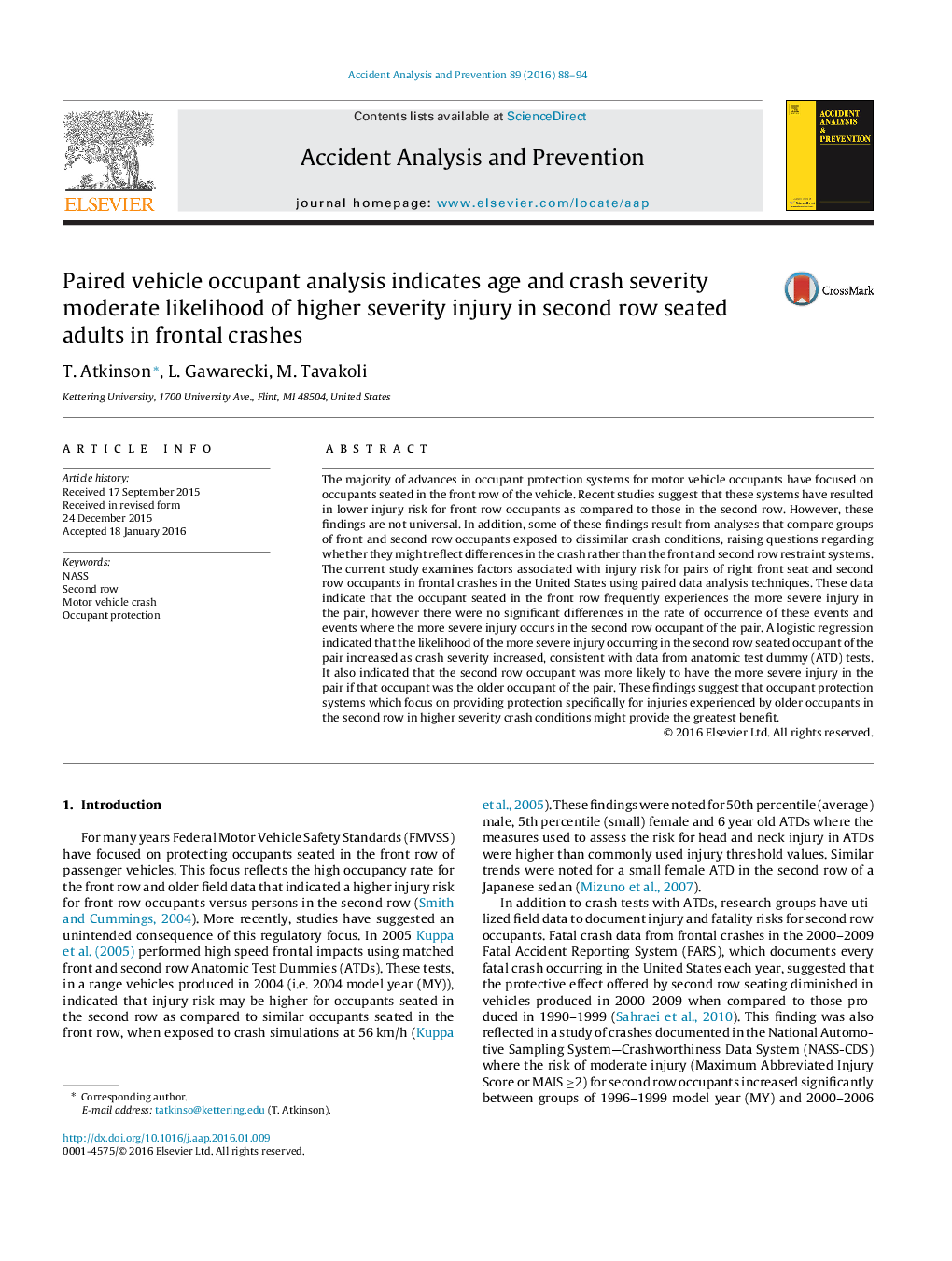| Article ID | Journal | Published Year | Pages | File Type |
|---|---|---|---|---|
| 6965334 | Accident Analysis & Prevention | 2016 | 7 Pages |
Abstract
The majority of advances in occupant protection systems for motor vehicle occupants have focused on occupants seated in the front row of the vehicle. Recent studies suggest that these systems have resulted in lower injury risk for front row occupants as compared to those in the second row. However, these findings are not universal. In addition, some of these findings result from analyses that compare groups of front and second row occupants exposed to dissimilar crash conditions, raising questions regarding whether they might reflect differences in the crash rather than the front and second row restraint systems. The current study examines factors associated with injury risk for pairs of right front seat and second row occupants in frontal crashes in the United States using paired data analysis techniques. These data indicate that the occupant seated in the front row frequently experiences the more severe injury in the pair, however there were no significant differences in the rate of occurrence of these events and events where the more severe injury occurs in the second row occupant of the pair. A logistic regression indicated that the likelihood of the more severe injury occurring in the second row seated occupant of the pair increased as crash severity increased, consistent with data from anatomic test dummy (ATD) tests. It also indicated that the second row occupant was more likely to have the more severe injury in the pair if that occupant was the older occupant of the pair. These findings suggest that occupant protection systems which focus on providing protection specifically for injuries experienced by older occupants in the second row in higher severity crash conditions might provide the greatest benefit.
Related Topics
Physical Sciences and Engineering
Chemical Engineering
Chemical Health and Safety
Authors
T. Atkinson, L. Gawarecki, M. Tavakoli,
